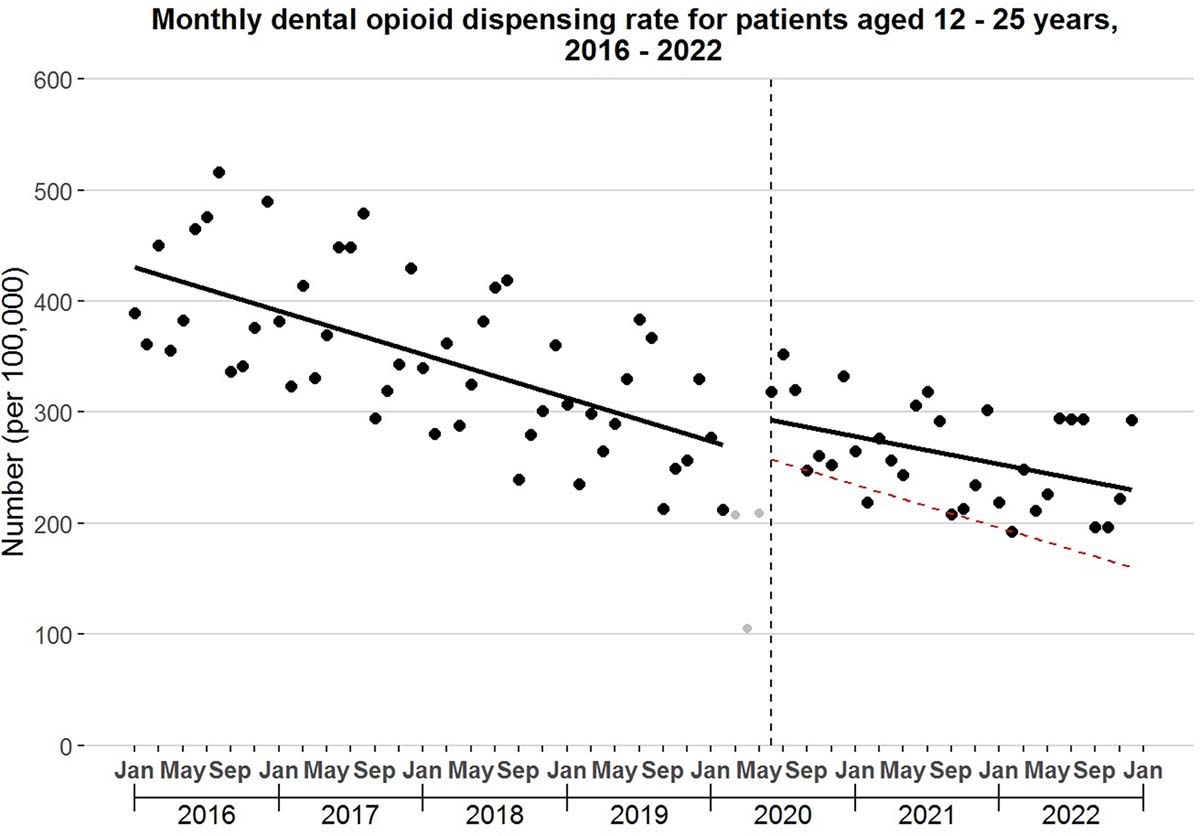Study Shows Dental Opioid Prescribing Went Up During COVID-19 Pandemic
A new study demonstrates that dental opioid prescribing increased during the peak of the COVID-19 pandemic, reinforcing the importance of non-opioid pain management solutions even during global health emergencies.
Study Shows Dental Opioid Prescribing Went Up During COVID-19 Pandemic. Image credit: © PLOS ONE

A recent study published in PLoS ONE, titled "Association between the COVID-19 outbreak and opioid prescribing by U.S. dentists," has shed light on the impact of the COVID-19 pandemic on dental opioid prescribing practices in the United States.1 The study, conducted by a team of researchers led by Dr Jian Zhang from the University of Michigan Medical School, aimed to evaluate the association between the COVID-19 outbreak and the rate of opioid prescribing by U.S. dentists. The findings offer valuable insights into the evolving landscape of dental opioid prescribing.
Prior to this study, United States data on opioid prescribing by dentists were limited to 2019. With the emergence of the COVID-19 pandemic, it became essential to assess whether this global health crisis had affected dental opioid prescribing practices. The study aimed to determine the impact of COVID-19 on dental opioid prescribing, understand current trends, and assess the need for continued dental opioid stewardship initiatives.
To find answers, the research team conducted a cross-sectional analysis using data from the IQVIA Longitudinal Prescription Database, which covers 92% of prescriptions dispensed in United States retail pharmacies. Opioid cough-and-cold medications and opioids used to treat opioid use disorder were excluded per this definition, according to the study. The research team calculated the monthly dental opioid dispensing rate, defined as the monthly number of dispensed opioid prescriptions by dentists per 100,000 U.S. individuals. The analysis spanned from January 2016 to February 2020 and from June 2020 to December 2022. Data from March to May 2020, when dental prescribing sharply declined due to national lockdowns, were excluded to avoid distortions in trends. Linear segmented regression models were used to assess level and slope changes in the dental opioid dispensing rate during June 2020.
The study included a staggering 81,189,605 dental opioid prescriptions, revealing significant trends in dental opioid prescribing. The annual number of prescriptions saw a decline of 44.7% from 2016 to 2022.
Between January 2016 and February 2020, the monthly dental opioid dispensing rate declined at a rate of -3.9 per month. However, a notable shift occurred in June 2020, when this rate abruptly increased by 31.4, and the monthly decline in dental opioid dispensing slowed to -2.1 per month. This change in trends meant that 6.1 million more dental opioid prescriptions were dispensed during June 2020 to December 2022 than would have been predicted had trends from January 2016 to February 2020 continued.
The study highlights that while dental opioid prescribing was on a declining trend in the United States, this decline slowed down after the COVID-19 outbreak, underscoring the continued importance of dental opioid stewardship initiatives in mitigating the potential risks associated with opioid prescriptions.
The study's subgroup analyses revealed variations in changes, suggesting that efforts to monitor and improve the appropriateness of dental opioid prescribing need to consider demographic factors and regional disparities. It is also vital to maintain access to dental care during public health emergencies to reduce the need for opioid prescribing for complications due to delayed dental care.
These insights are crucial as the dental profession plays a significant role in the overall opioid prescribing landscape, and addressing these practices is vital in the ongoing battle against opioid-related harms and the opioid epidemic.
Authors Jason Zhang, Romesh P. Nalliah, Jennifer F. Waljee, Chad M. Brummett, and Kao-Ping Chua, published “Association between the COVID-19 outbreak and opioid prescribing by U.S. dentists,” in PLOS ONE, with funding provided by a grant from the Benter Foundation, the Michigan Department of Health and Human Services, and the Susan B. Meister Child Health Evaluation and Research Center in the Department of Pediatrics at the University of Michigan Medical School.
To dive deeper into the methodology of this study, read it for free here.
Reference
- Zhang J, Nalliah RP, Waljee JF, Brummett CM, Chua K-P (2023) Association between the COVID-19 outbreak and opioid prescribing by U.S. dentists. PLoS ONE. 18(11): e0293621. https://doi.org/10.1371/journal.pone.0293621